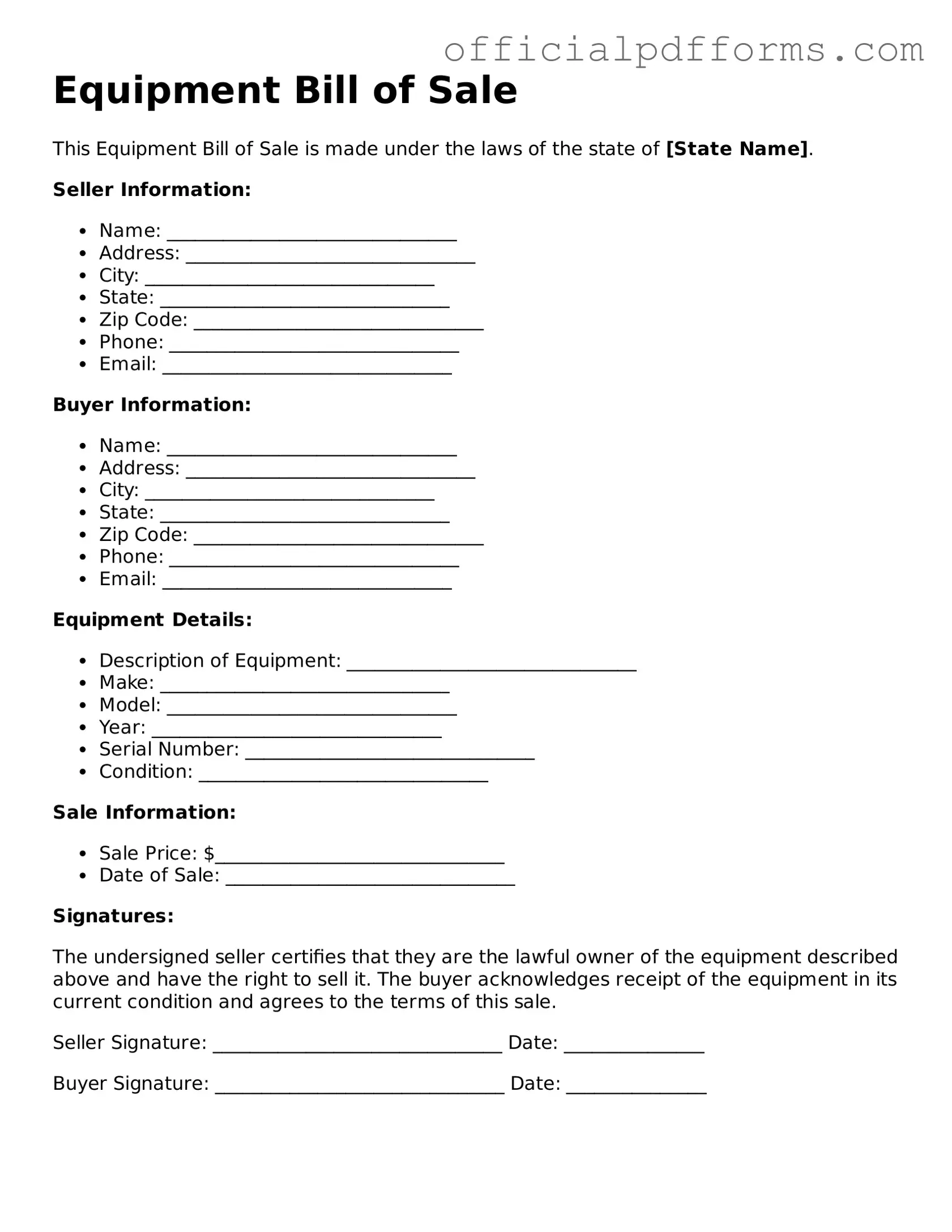What is an Equipment Bill of Sale?
An Equipment Bill of Sale is a legal document that serves as a receipt for the sale of equipment. It outlines the terms of the transaction between the buyer and seller, including the description of the equipment, the sale price, and the date of sale. This document is essential for both parties as it provides proof of ownership transfer and can be useful for tax purposes.
Why is an Equipment Bill of Sale important?
This document is important for several reasons:
-
It provides legal proof that the buyer has purchased the equipment.
-
It protects the seller from future claims regarding ownership.
-
It can be used to establish the value of the equipment for tax and insurance purposes.
-
It outlines the condition of the equipment at the time of sale, which can prevent disputes.
An Equipment Bill of Sale should include the following information:
-
The names and addresses of both the buyer and seller.
-
A detailed description of the equipment, including make, model, serial number, and condition.
-
The sale price and payment method.
-
The date of the transaction.
-
Any warranties or guarantees provided by the seller.
Is the Equipment Bill of Sale legally binding?
Yes, an Equipment Bill of Sale is legally binding once both parties sign it. This means that both the buyer and seller are obligated to adhere to the terms outlined in the document. However, the enforceability may depend on the completeness and accuracy of the information provided.
Can I create my own Equipment Bill of Sale?
Yes, individuals can create their own Equipment Bill of Sale. It is important to ensure that the document includes all necessary information and complies with local laws. Many templates are available online, which can serve as a useful starting point.
Do I need a notary for an Equipment Bill of Sale?
While a notary is not typically required for an Equipment Bill of Sale, having one can add an extra layer of authenticity. A notarized document can help verify the identities of the parties involved and may be beneficial if disputes arise in the future.
What if the equipment has a loan or lien against it?
If the equipment has an outstanding loan or lien, the seller must disclose this information to the buyer. The sale may still proceed, but the buyer should be aware of any financial obligations associated with the equipment. It is advisable to clear any liens before completing the sale to avoid complications.
How should the payment be handled in an Equipment Bill of Sale?
Payment terms should be clearly outlined in the Equipment Bill of Sale. This includes the total sale price, accepted payment methods (cash, check, bank transfer, etc.), and any deposit arrangements. Both parties should agree on when the payment will be made, ideally before the equipment is transferred.
What happens if the equipment is damaged after the sale?
Once the Equipment Bill of Sale is signed and the transaction is complete, the buyer assumes ownership and responsibility for the equipment. Any damages that occur after the sale typically fall under the buyer's responsibility unless otherwise stated in the bill of sale.
Where can I find a template for an Equipment Bill of Sale?
Templates for Equipment Bills of Sale can be found online through various legal websites, government resources, and document preparation services. It is advisable to select a template that is specific to your state or locality to ensure compliance with local laws.
